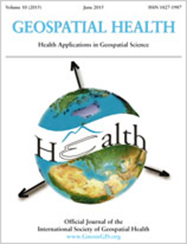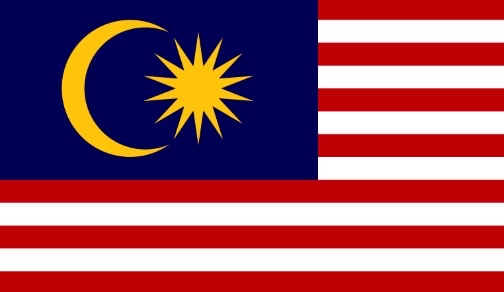Common errors in disease mapping
Published: 1 May 2010
Abstract Views: 3151
PDF: 1018
Publisher's note
All claims expressed in this article are solely those of the authors and do not necessarily represent those of their affiliated organizations, or those of the publisher, the editors and the reviewers. Any product that may be evaluated in this article or claim that may be made by its manufacturer is not guaranteed or endorsed by the publisher.
All claims expressed in this article are solely those of the authors and do not necessarily represent those of their affiliated organizations, or those of the publisher, the editors and the reviewers. Any product that may be evaluated in this article or claim that may be made by its manufacturer is not guaranteed or endorsed by the publisher.
Similar Articles
- Mai Liu, Yin Zhang, Impact of climate change on dengue fever: a bibliometric analysis , Geospatial Health: Vol. 20 No. 1 (2025)
- Sarah Isnan, Ahmad Fikri bin Abdullah, Abdul Rashid Shariff, Iskandar Ishak, Sharifah Norkhadijah Syed Ismail, Maheshwara Rao Appanan, Moran’s I and Geary’s C: investigation of the effects of spatial weight matrices for assessing the distribution of infectious diseases , Geospatial Health: Vol. 20 No. 1 (2025)
- Kuo-Hsin Tseng, Song Liang, Motomu Ibaraki, Hyongki Lee, C. K. Shum, Study of the variation of schistosomiasis risk in Lake Poyang in the People's Republic of China using multiple space-borne sensors for monitoring and modelling , Geospatial Health: Vol. 8 No. 2 (2014)
- Ulrik B. Pedersen, Nicholas Midzi, Takafira Mduluza, White Soko, Anna-Sofie Stensgaard, Birgitte J. Vennervald, Samson Mukaratirwa, Thomas K. Kristensen, Modelling spatial distribution of snails transmitting parasitic worms with importance to human and animal health and analysis of distributional changes in relation to climate , Geospatial Health: Vol. 8 No. 2 (2014)
- Kiran Afshan, Cesar A. Fortes-Lima, Patricio Artigas, M. Adela Valero, Mazhar Qayyum, Santiago Mas-Coma, Impact of climate change and man-made irrigation systems on the transmission risk, long-term trend and seasonality of human and animal fascioliasis in Pakistan , Geospatial Health: Vol. 8 No. 2 (2014)
- Luis E. Escobar, Andrés Lira-Noriega, Gonzalo Medina-Vogel, A. Townsend Peterson, Potential for spread of the white-nose fungus (Pseudogymnoascus destructans) in the Americas: use of Maxent and NicheA to assure strict model transference , Geospatial Health: Vol. 9 No. 1 (2014)
- Constantin Daraban, Carla Murino, Giuseppe Marzatico, Giuseppina Mennonna, Gerardo Fatone, Luigi Auletta, Fabiana Micieli, Vasile Vulpe, Leonardo Meomartino, Using geographical information system for spatial evaluation of canine extruded disc herniation , Geospatial Health: Vol. 9 No. 1 (2014)
- Zhao Chen, Liang Shi, Xiao-Nong Zhou, Zhi-Gui Xia, Robert Bergquist, Qing-Wu Jiang, Elimination of malaria due to Plasmodium vivax in central part of the People's Republic of China: analysis and prediction based on modelling , Geospatial Health: Vol. 9 No. 1 (2014)
- Marcos C. Ferreira, Geographical distribution of the association between El Niño South Oscillation and dengue fever in the Americas: a continental analysis using geographical information system-based techniques , Geospatial Health: Vol. 9 No. 1 (2014)
- Nicolas M. Oreskovic, Jeff Blossom, Alyssa I. Robinson, Minghua L. Chen, Doris K. Uscanga, Jason A. Mendoza, The influence of the built environment on outcomes from a walking school bus study: a cross-sectional analysis using geographical information systems , Geospatial Health: Vol. 9 No. 1 (2014)
You may also start an advanced similarity search for this article.











